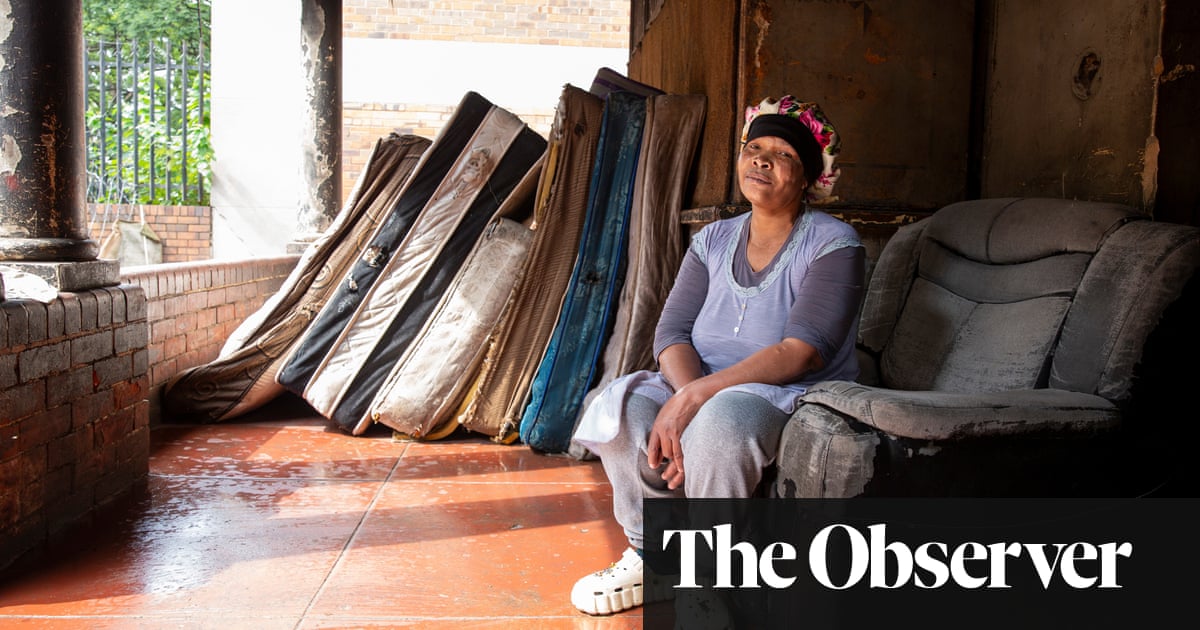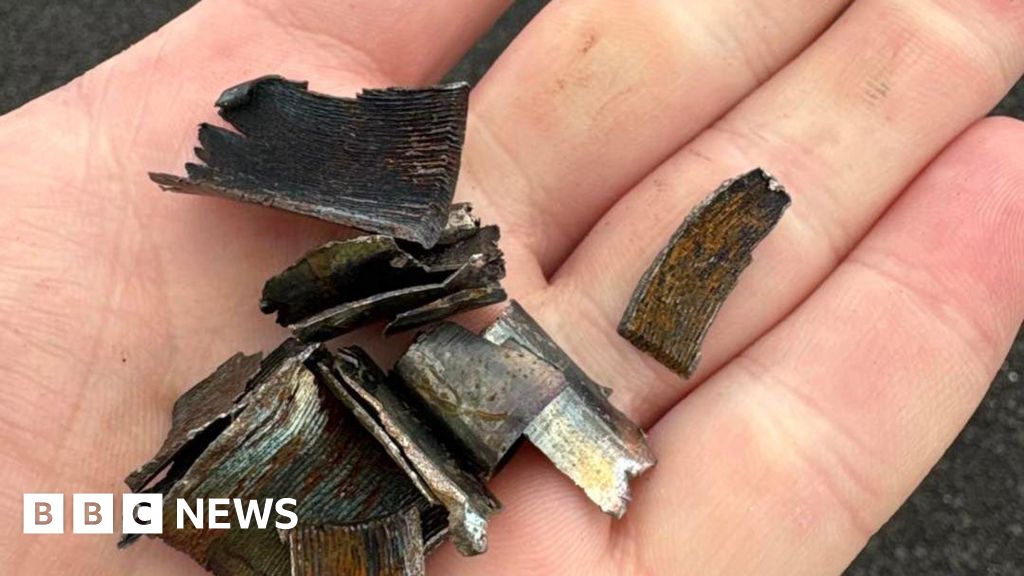Johannesburg's Struggles and Resilience: A Story of Community Amidst Decay

Bethabile Mavis Manqele, a resident of Johannesburg, meticulously mops the veranda of her home, a place she has called home for nearly four decades. At 64 years old, Manqele faces the harsh realities of living in a dilapidated dwelling where the ceiling above her is riddled with holes, blackened and stained from years of cooking fires. She is uncertain about the exact number of people sharing the seven rooms of her house, which has become a refuge for many in similar situations.
The absence of basic utilities is a common plight in her neighborhood, and Manqele, through a translator, reveals that she hasnt paid rent in years. The residents rely on a portable toilet maintained by a local non-governmental organization, sharing a single outdoor tap with a neighboring house that lacks even a roof.
Manqele's living conditions are reflective of a wider trend in Johannesburgs inner city district of Berea, which has seen an exodus of wealth, businesses, and government presence since the 1980s. As a result, numerous buildings have been abandoned by their landlords, leading to severe overcrowding and a reputation for crime that plagues the area.
Beyond these inner-city struggles, the city, often referred to as the City of Gold, is facing growing dissatisfaction among its residents regarding essential services like water supply and road maintenance. This discontent is highlighted in the latest quality of life survey published by the Gauteng City-Region Observatory. In a recent address, South African President Cyril Ramaphosa acknowledged the grim state of affairs, describing the environment as not pleasing. He announced the formation of a presidential working group tasked with revitalizing Johannesburg in preparation for the upcoming G20 summit set for November.
In stark contrast to the prevailing challenges, a surge of artists and business leaders are banding together to revitalize their city. Stephen du Preez, who oversees 11 business improvement districts and volunteers with the Jozi My Jozi coalition, a newly established business group in 2023, emphasized the vibrant energy of Johannesburg. Its always hustling theres an energy, he stated, highlighting the resilience of the city's people.
The Jozi My Jozi initiative has garnered support from around 140 local businesses, contributing a remarkable 75 million rand (3 million) over the past two years to various community projects, including the installation of 613 solar-powered streetlights. Du Preez pointed out that their approach focuses on collaborating with local communities rather than displacing them through gentrification. The initiative is also expanding its efforts into Soweto, a former black-only township, aiming to foster inclusive growth.
However, not all redevelopment efforts have been beneficial for the existing residents. Edward Molopi from the Socio-Economic Rights Institute of South Africa (Seri), an organization aiding Manqele and her neighbors, expressed concern about past attempts to regenerate areas like the trendy Maboneng district. He noted that these initiatives often lead to the eviction of current residents, followed by skyrocketing rents, questioning whether there is truly a place for the economically disadvantaged in the gentrifying inner city.
Johannesburg is notorious for its stark inequalities, resting in a country that has been labeled the most unequal in the world. The affluent Sandton business district, often referred to as Africas richest square mile, stands in stark contrast to the impoverished townships established during the apartheid era, where non-white individuals were systematically pushed to the fringes of the city.
Historically, when gold was discovered in Johannesburg in 1886, a significant social divide emerged. Black male migrant workers lived in makeshift camps in the southern regions, while affluent white Randlords resided in opulent mansions on northern hilltops. Noor Nieftagodien, a history professor at the University of the Witwatersrand, noted, There were these social fractures in the city from the very beginning.
Although the poorest residents have always borne the brunt of the citys challenges, middle-class grievances are beginning to echo just as loudly as complaints about issues like water shortages have started infiltrating suburban areas as well. The political landscape in Johannesburg has also been tumultuous, with the city experiencing eight different mayors over the last four years, which has fueled frustrations among its residents.
Tragic incidents have highlighted the dire state of housing in Johannesburg. In 2023, a devastating fire claimed the lives of 77 individuals at 80 Albert Road, an overcrowded apartment building owned by the city. An official inquiry attributed the disaster to neglect by local authorities, prompting the provincial premier to commit to acting on its findings.
To combat the issue of unsafe housing, the city government is implementing a bad buildings strategy designed to address properties that have been hijacked. According to spokesperson Virgil James, there are currently court orders in place aimed at evacuating occupants from six buildings to temporary emergency accommodations.
In Manhattan Court, a 108-room apartment building located in a bustling shopping district, residents are collectively paying 25,000 rand monthly to the city for services and to negotiate ownership of their homes. Noma Qwele, a member of the residents committee and a longtime inhabitant since 1986, shared that they also cover maintenance and security costs but are left in the dark regarding the building's ownership after it was auctioned off, expressing, The building is for us. Its our home.
Activists like Sifiso Zuma from the Inner City Foundation, which supports residents of Manhattan Court, lament the lack of attention from city officials towards the plight of impoverished residents, stating, If you are poor, they dont care about you. Those living in occupied buildings are willing to pay for basic services, but the city it doesnt want to talk to them.
On a more optimistic note, the vibrant arts scene continues to thrive in Johannesburg. In Fordsburg, the outer wall of the Bag Factory is adorned with a striking orange mural crafted by artist Levy Pooe. This creative hub, established in 1991, is home to nine long-term artists and six emerging talents supported by bursaries. Ndaya Ilunga, a young artist born in Johannesburg to parents who fled the Democratic Republic of Congo, expressed her pride in being part of this cultural energy: Its always been a very vibrant city. I feel like Im now part of that, those people who create that energy.



























